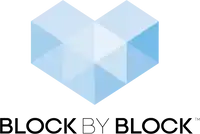Block by Block

| Type |
Charity |
|---|---|
| Founder(s) |
Vu Bui and Pontus Westerberg |
| Founded |
September 2012[1] |
| Headquarters |
Redmond, Washington |
| Products |
Block by Block |
| Parent company |
Partnership between Mojang and UN-Habitat |
| Links |
|
{
"title": "Block by Block",
"rows": [
{
"field": "Charity",
"label": "Type"
},
{
"field": "Vu Bui and Pontus Westerberg",
"label": "Founder(s)"
},
{
"field": "September 2012",
"label": "Founded"
},
{
"field": "Redmond, Washington",
"label": "Headquarters"
},
{
"field": "Block by Block",
"label": "Products"
},
{
"field": "Partnership between (link to Mojang article, displayed as Mojang) and UN-Habitat",
"label": "Parent company"
},
{
"field": "\n* [https://www.blockbyblock.org Website]",
"label": "Links"
}
],
"invimages": [],
"images": [
"BlockbyBlockLogo.png"
]
}
Block by Block is a charity set up in 2012 by Mojang to support the United Nations Human Settlements Programme (UN-Habitat)'s work with public space and Minecraft. The purpose of Block by Block is to raise funds for the improvement of public spaces worldwide, with a focus on poor communities in developing countries.[2]
Employees
| Name[2] | Position[2] | |
|---|---|---|
| James Delaney | Chairman (London, United Kingdom) | @James_A_Delaney |
| Vu Bui | President (Stockholm, Sweden) | @vubui |
| Celine d’Cruz | Vice President (Berlin, Germany) | @celine_dcruz |
| Kyle Farrell | Director (Vancouver, Canada) | |
| Deirdre Quarnstrom | Director (Seattle, Washington) | @Deirdre206 |
| José Chong | Special Advisor (Nairobi, Kenya) | @josechong |
| Joy Mutai | @JoyMutai0 | |
| Cecilia Andersson | ||
| Christelle Lahoud | @ChrisLahoud | |
| Carl Brandt | Special Advisor (Redmond, Washington) | |
| Lydia Winters | Special Advisor (Stockholm, Sweden) | @LydiaWinters |
| Stacy 'stacyplays' Hinojosa | Minecraft Community Ambassador (Salt Lake City, Utah) | @stacyplays |
History
The Block by Block non-profit was created in 2012, initially with the help of Byggtjanst, a Swedish company that had tested the use of Minecraft for youth participation in the redesign of low-cost housing areas with good results. After initial tests in Kenya and Nepal, Block by Block is now used all over the world. Currently, the program is working in 35 countries across Africa, Latin America, Asia, and Europe. Mojang and Microsoft are key supporters of the program through Block by Block.
Method
- Based on images, plans, Google Maps, and other available materials, a base Minecraft model of the public space is produced by UN-Habitat.
- UN-Habitat arranges for a Minecraft expert to provide Minecraft training and support.
- Community participation workshops are held with youth, project staff, and partners in order to:
- Train participants in the basics of Minecraft modeling
- Facilitate dialogue on issues regarding the public space
- Produce Minecraft models incorporating the proposed design ideas
- Collate the ideas that are included in the models
After that,
- The participants are briefed and divided into groups of 2-4 people, with one computer provided for each group.
- The participants are given sufficient time to develop their ideas in Minecraft. Depending on the level of prior IT and Minecraft knowledge, two to four days is recommended.
- The participants present their Minecraft models to stakeholders – including urban professionals, policymakers, government officials, and UN-Habitat staff. The designs are discussed through a deliberation process and final designs are agreed upon among stakeholders.
- The Minecraft proposals are used to feed into professional design work and budget processes.
Videos
Gallery
-
 The old logo
The old logo -
 Another logo
Another logo
References
External links
| |||||||||||||||||||||||
| |||||||||||||||||||||||